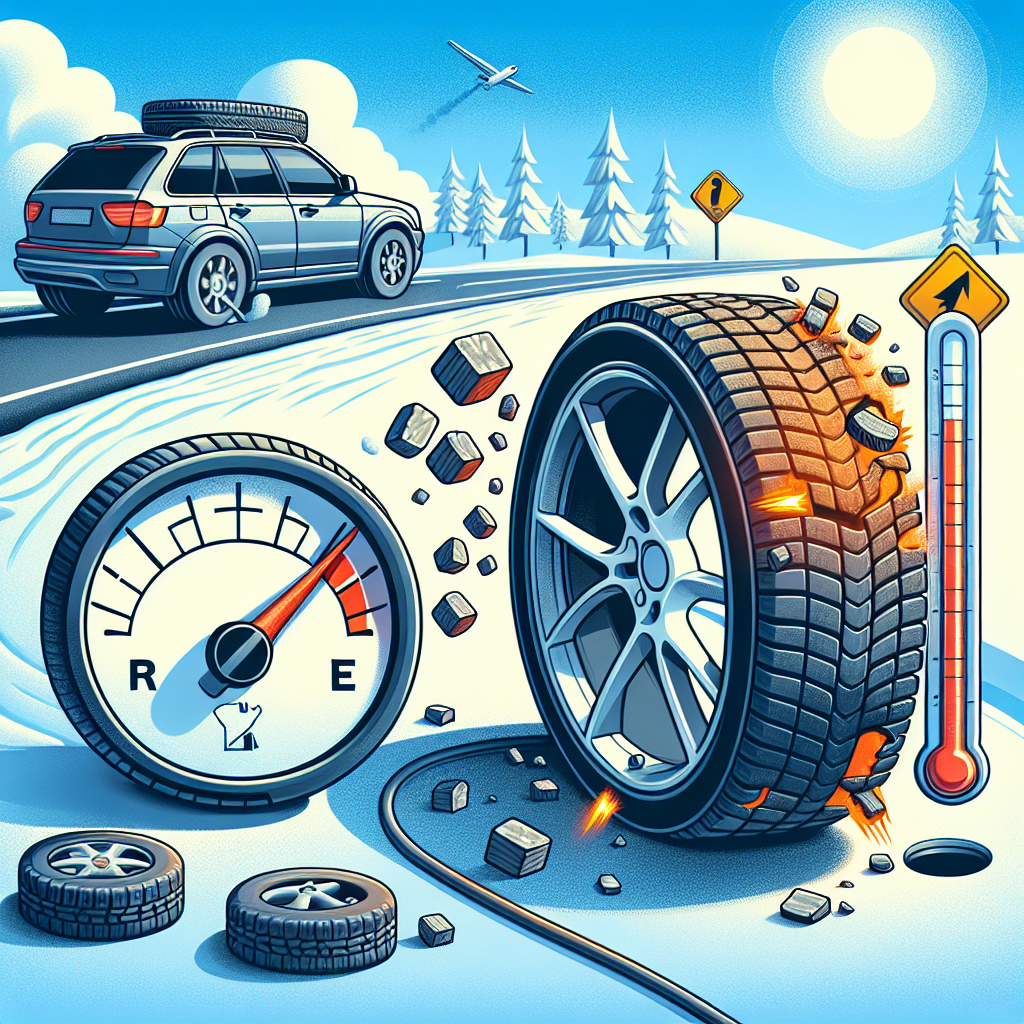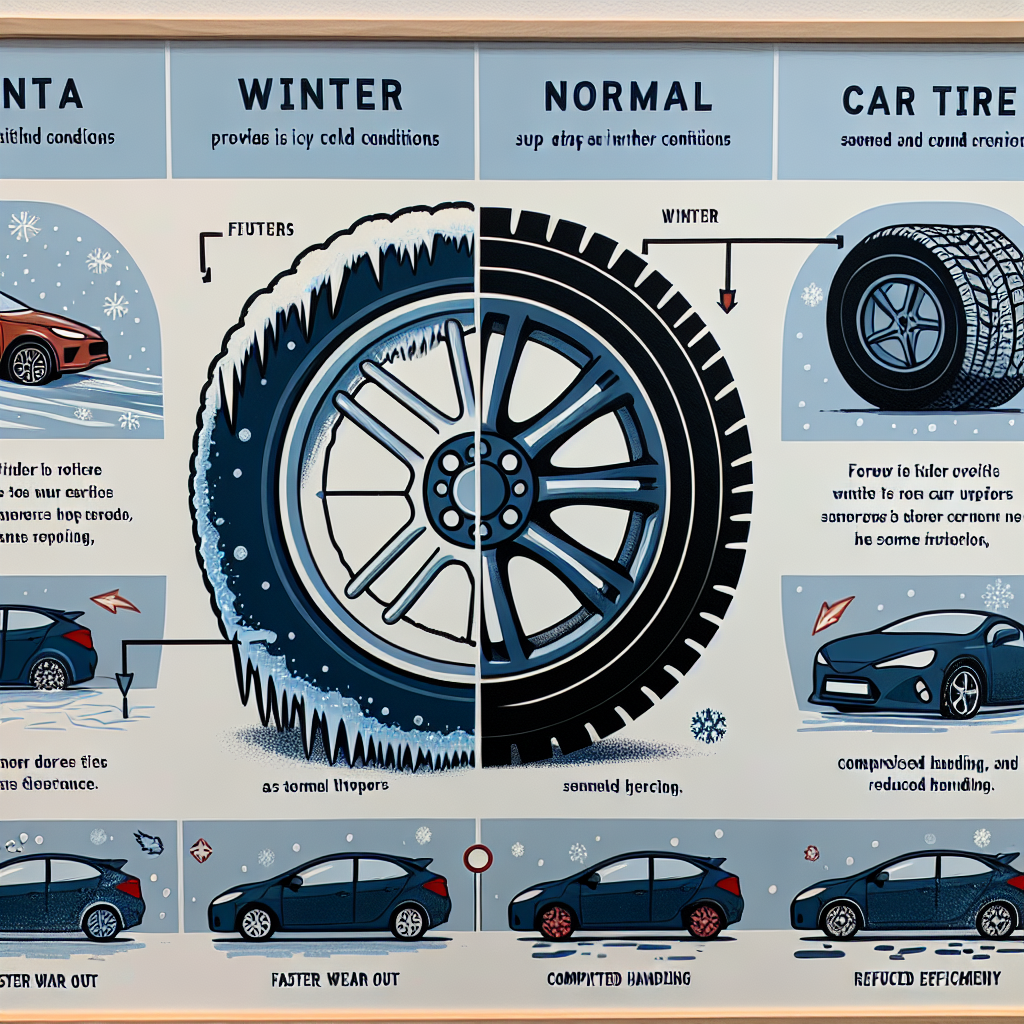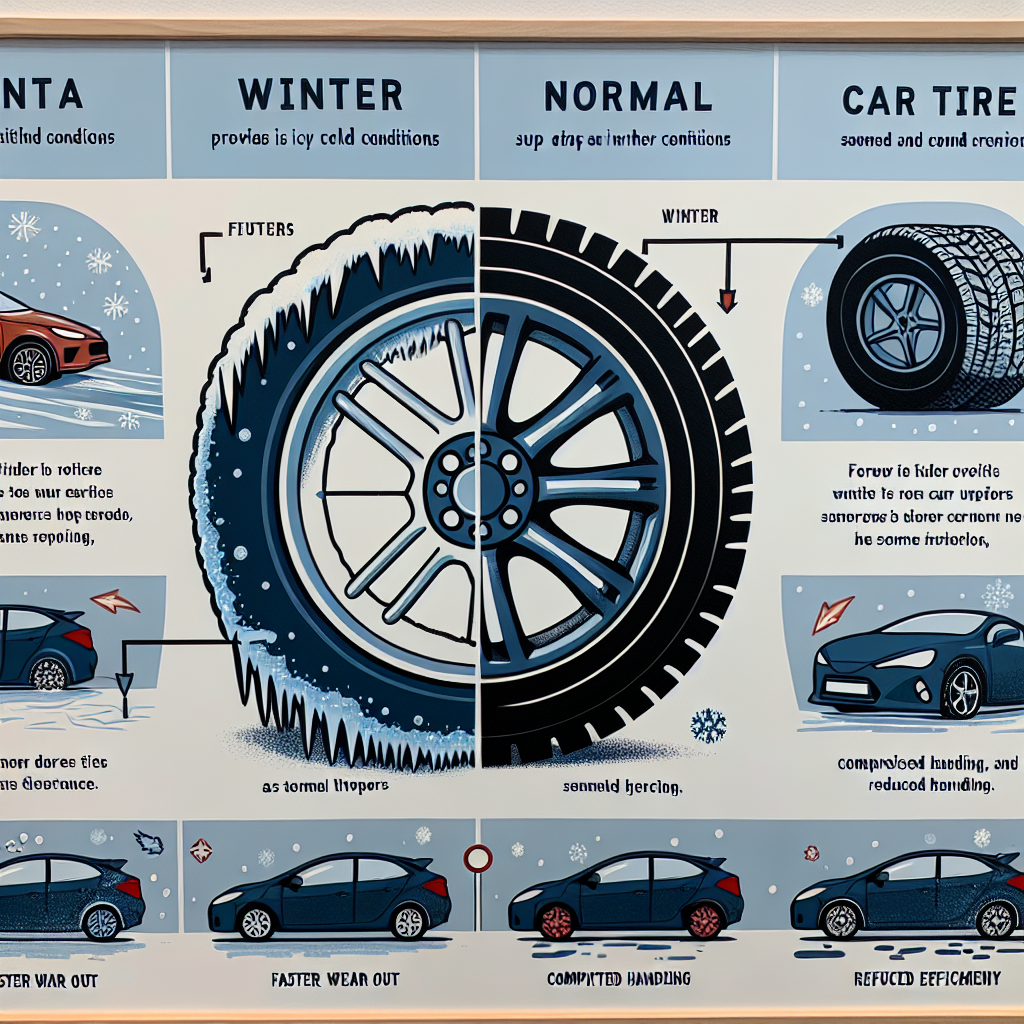Imagine cruising down the road on a sunny, warm day with the breeze flowing through your hair. You look down at your trusty winter tires and wonder, “Are there any disadvantages to using these in these warmer temperatures?” It’s a valid question, one that many drivers ponder as the seasons change. In this article, we’ll explore the potential downsides of using winter tires in warmer environments and help you make an informed decision about your tire choice. So sit back, relax, and let’s dig into the pros and cons of this tire dilemma.
1. Reduced Fuel Efficiency
1.1 Increased Rolling Resistance
using winter tires in warmer temperatures can lead to reduced fuel efficiency. One of the main reasons for this is increased rolling resistance. Winter tires are designed with deep, aggressive tread patterns that provide excellent traction on snow and ice. However, these deep treads create more friction with the road surface, causing the tires to work harder and consume more energy. As a result, your vehicle’s fuel economy can suffer, leading to more frequent trips to the gas station.
1.2 Higher Energy Consumption
Another factor contributing to reduced fuel efficiency when using winter tires in warmer temperatures is higher energy consumption. Winter tires are made of a softer rubber compound compared to all-season or summer tires. This softer rubber allows the tire to remain pliable in cold temperatures, promoting better grip on icy surfaces. However, in warmer weather, the softer rubber can become overly flexible, leading to increased energy consumption. As the tire flexes more, it creates more heat and resistance, resulting in higher energy consumption and reduced fuel efficiency.
2. Decreased Traction
2.1 Less Effective Braking
When using winter tires in warmer temperatures, there is a decreased level of traction, particularly in terms of braking. Winter tires feature specialized tread patterns that provide optimal grip on icy and snowy road surfaces. However, these same tread patterns can be less effective on dry or wet roads in warmer conditions. The deep, aggressive treads can struggle to maintain sufficient contact with the road surface, resulting in decreased braking performance. This reduced traction can compromise your ability to stop quickly and safely.
2.2 Reduced Cornering Grip
In addition to decreased braking performance, winter tires used in warmer temperatures can also result in reduced cornering grip. The aggressive tread patterns, while excellent for navigating through snow and ice, can hinder the tire’s ability to maintain optimal contact with the road during cornering. This reduced grip can lead to less precise handling and potentially increase the risk of a loss of control, especially when taking corners at higher speeds.

3. Premature Wear
3.1 Softer Compound
Using winter tires in warmer temperatures can lead to premature wear, primarily due to the softer rubber compound of these tires. As mentioned earlier, winter tires are designed to remain pliable in cold temperatures. However, in warmer weather, the softer compound can wear out more quickly. The increased friction and heat generated by the softer rubber interacting with the road surface can cause the tire tread to wear down at a faster rate, reducing the overall lifespan of the tire.
3.2 Faster Tread Wearing
Another aspect of premature wear when using winter tires in warmer temperatures is faster tread wearing. The aggressive tread designs that provide excellent traction on snow and ice can wear down more rapidly on dry or wet roads. The deeper tread blocks can experience more rapid abrasion and may even begin to chip or chunk off, further diminishing the tire’s performance and safety.
3.3 Uneven Wear Patterns
Additionally, using winter tires in warmer temperatures can lead to uneven wear patterns. The tire’s softer rubber compound and aggressive tread designs may not wear evenly across the tire’s surface. This uneven wear can result in a loss of traction and stability. It can also lead to increased road noise and vibrations, making for a less comfortable and enjoyable driving experience.
4. Noisier Ride
4.1 Increased Road Noise
Another disadvantage of using winter tires in warmer temperatures is a noisier ride. Winter tires typically have larger tread blocks and more aggressive tread patterns than all-season or summer tires. While this design is ideal for providing traction on slippery surfaces, it can contribute to increased road noise on dry roads. The larger tread blocks create more contact with the road, generating more noise as they roll over the pavement. This can lead to a less peaceful and comfortable driving experience, especially during long trips.
4.2 Vibrations
In addition to increased road noise, using winter tires in warmer temperatures can also result in vibrations. The aggressive tread patterns on winter tires can cause the tires to become slightly unbalanced. As a result, you may experience vibrations through the steering wheel or even in the vehicle’s cabin. These vibrations can be a noticeable annoyance and may even affect your ability to maintain precise control of the vehicle.

5. Limited Handling and Responsiveness
5.1 Slower Steering Response
Using winter tires in warmer temperatures can lead to limited handling and slower steering response. The aggressive tread patterns and softer rubber compound of winter tires are not optimized for warmer conditions. As a result, the tires may not respond as quickly to steering inputs, reducing the overall responsiveness of your vehicle. This slower steering response can be particularly noticeable during quick maneuvers or when navigating tight corners.
5.2 Reduced Stability
Moreover, winter tires used in warmer temperatures may result in reduced stability. The aggressive tread designs, while providing excellent traction on snow and ice, can have a negative impact on stability on dry or wet roads. The deeper channels and flexible tread blocks can cause the tire to deform more easily, compromising its ability to maintain a stable contact patch with the road surface. This reduced stability can make your vehicle feel less planted and secure, especially at higher speeds or during sudden lane changes.
6. Reduced Comfort
6.1 Stiffer and Less Absorbent
Using winter tires in warmer temperatures can lead to reduced comfort. Winter tires are typically stiffer and less absorbent compared to all-season or summer tires. This stiffness is intended to maintain the tire’s shape and stability in cold temperatures. However, in warmer weather, the tires can feel firmer, transmitting more road imperfections and vibrations to the vehicle’s cabin. As a result, you may experience a rougher and less comfortable ride overall.
6.2 Rougher Ride
In addition to increased stiffness, winter tires used in warmer temperatures can result in a rougher ride. The aggressive tread designs, while providing excellent traction on slippery surfaces, can contribute to a bumpier driving experience on dry or wet roads. The larger tread blocks and deeper channels can transmit more road irregularities to the vehicle, making the ride less smooth and enjoyable.

7. Higher Risk of Hydroplaning
7.1 Narrower Grooves
Using winter tires in warmer temperatures can increase the risk of hydroplaning. Winter tires often have narrower grooves compared to all-season or summer tires. While these narrow grooves are effective at cutting through snow and slush, they have a limited ability to disperse water on wet roads. This reduced water dispersion can result in a higher risk of hydroplaning, especially at higher speeds or during heavy rain showers. Hydroplaning occurs when a layer of water builds up between the tires and the road surface, reducing traction and control.
7.2 Decreased Water Dispersion
Moreover, winter tires used in warmer temperatures may have decreased water dispersion capabilities compared to tires specifically designed for wet conditions. The specialized tread patterns on winter tires are primarily optimized for traction on snow and ice. However, these tread designs may not efficiently channel water away from the tire’s contact patch on wet roads. This can result in reduced grip and compromised safety, particularly during wet weather conditions.
8. Increased Stopping Distance
Using winter tires in warmer temperatures can lead to an increased stopping distance. As mentioned earlier, winter tires are designed with deep, aggressive tread patterns that provide excellent traction on snow and ice. However, in warmer conditions, these deep treads can hinder the tire’s ability to maintain optimal contact with the road surface. This reduced contact can result in a longer stopping distance, meaning it will take more time and distance to bring your vehicle to a complete stop. This increased stopping distance can be particularly concerning in emergency situations where every inch counts.

9. Potential Tire Damage
9.1 Overheating
Using winter tires in warmer temperatures can potentially lead to tire damage, especially due to overheating. The softer rubber compound of winter tires can become more flexible in higher temperatures, resulting in increased heat generation. Excessive heat buildup can cause the tire to degrade faster, leading to reduced performance and safety. It is important to note that prolonged use of winter tires in warmer conditions can significantly shorten their lifespan and potentially result in tire failure.
9.2 Increased Blowout Risk
Another potential tire damage when using winter tires in warmer temperatures is an increased risk of blowouts. The softer rubber compound of winter tires, combined with the increased flexibility in warmer weather, can make the tire more susceptible to punctures or blowouts. The higher temperatures can cause the tire to expand and become more vulnerable to road hazards, such as potholes or sharp debris. This heightened risk of blowouts can put you and your passengers in danger and may result in costly repairs or replacements.
10. Incompatibility with Higher Speeds
10.1 Decreased Tire Durability
Using winter tires in warmer temperatures can decrease tire durability, especially at higher speeds. Winter tires are not designed to withstand the higher speeds associated with highway driving or prolonged periods of fast driving. The softer rubber compound and aggressive tread patterns of winter tires can wear down more quickly, leading to decreased durability and reduced overall tire performance.
10.2 Reduced Performance
In addition to decreased durability, winter tires used in warmer temperatures can result in reduced performance. The specialized tread patterns on winter tires, while highly effective in snow and ice, may not offer the same level of performance on dry or wet roads. The deeper channels and aggressive blocks can compromise handling, stability, and responsiveness, making the tire less suited for high-performance driving. As a result, using winter tires at higher speeds can compromise your safety and the overall performance of your vehicle.
Overall, while winter tires are essential for optimal traction and safety in cold, snowy, and icy conditions, using them in warmer temperatures can come with several disadvantages. From reduced fuel efficiency and decreased traction to premature wear and limited handling, there are various factors to consider when deciding whether to use winter tires outside of their intended season. It is important to balance the advantages of winter tires with the potential drawbacks, ensuring that your tire choice aligns with the prevailing weather conditions to maintain optimal safety and performance on the road.


